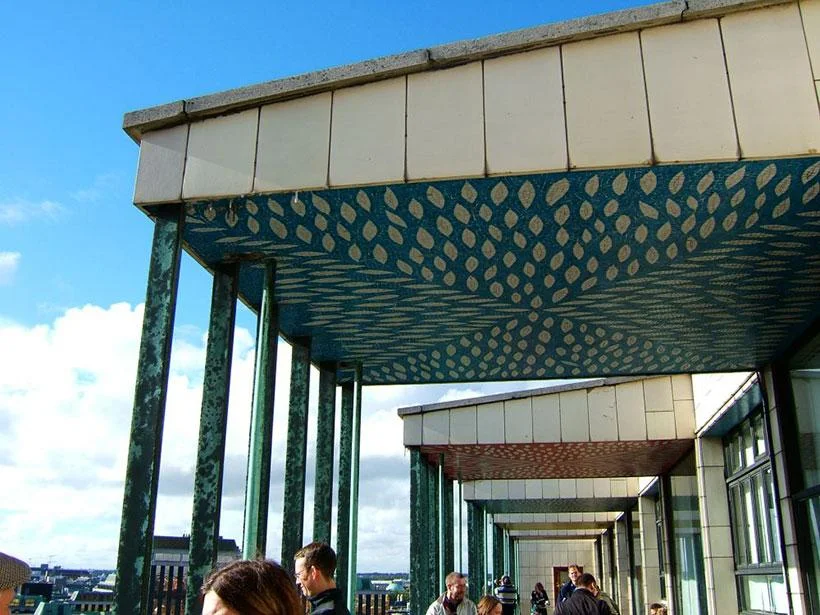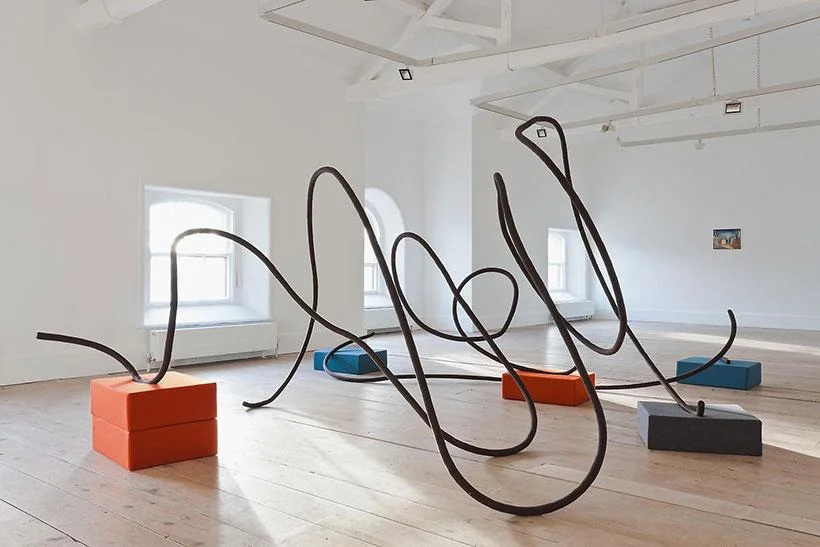Irish Art: Iverna's Selection
Irish Art: Iverna’s Selection
Happy St Patrick's Day!
It is no mean feat for a country of such diminutive size to have such influence that its national day of celebration is shared worldwide. This weekend, all around the globe there will be Irish flags flying, parades in motion, faces being painted green and pints being raised. And while those of us here at Iverna are flattered by all the attention our nation receives, we thought we would take the opportunity to focus that attention on something we’re really into: Irish art and design. From stone age monuments and Celtic metalwork to striking contemporary works, Irish art has had a long and varied history.
‘Busáras Mosaics’, Patrick Scott
We don't have the space to be exhaustive here, so instead have gathered just a few of our favourite works from the past century. We don't claim these to be the biggest, best or most important Irish artworks ever, but we think they’re of particular interest and hope you do too. If you like what you see, take a look at the recommended reading at the bottom to find out more about Irish art, design and creativity.
‘Brick Screen’, Eileen Gray, 1922-1925
Eileen Gray
Born in Ireland, Eileen Gray is undoubtedly Ireland's greatest design export, though this has really only be recognised in recent years. Gray spent all of her working life in Paris, creating spaces, furniture and artworks at the forefront of the international modernist movement. She was a contemporary of Le Corbusier, though unfortunately some of her work was, until recently, accredited to him. One area of art and design at which she excelled was lacquerwork, a laborious Japanese painting technique, and she was one of the first westerners to practice it, having apprenticed herself to Japanese practitioner Seizo Sugawara for six years.
‘Abstract Composition’, Mainie Jellett, c.1929
Mainie Jellett
Having studied in Paris under Albert Gleizes, Mainie Jellett is responsible for introducing Cubism to Ireland, albeit without immediate success – a conservative art audience took time to convince, and even artist Jack B Yeats is reputed to have said of her teacher, 'Who the blazes is Gleizes?' Nevertheless, she persevered, and not only created a solid body of work, but greatly contributed to the development of modern, abstract and conceptual art in Ireland. Mainie Jellett was born in 1897 and died in 1944.
‘Studies after Vélasquez Portrait of Pope Innocent X’, Francis Bacon, 1940s—1960s
Francis Bacon
Born in Ireland in 1909, Francis Bacon spent most of his working life in London, and he died in 1992. Bacon is best known for portraiture, using a somewhat abstracted style to create works that were often disturbing and always striking. In a series that continued from the late 1940s until the mid 1960s, Bacon created painting after painting exploring a papal theme, with many of the pieces being reworkings of Diego Vélasquez' Portrait of Pope Innocent X. While it is unclear what the motivation for the series was (even Bacon himself later said that the work was 'silly' and he didn't know why he made it), what is clear is that the artist could employ minimal means to great, grotesque effect.
‘KDW logo’, Louis Le Brocquy, 1963
Louis le Brocquy
Best known for his paintings, particularly his series of portraits of famous Irish artists and writers, Louis le Brocquy was a constant – and very important – presence in the Irish art and design scene for much of the 20th century. Born in 1916 (died 2012), le Brocquy is one of the Irish artists to receive the most acclaim both at home and worldwide. While his paintings are in public and private collections the world over, his design work is of note also, particularly his fresh and modern identity for Kilkenny Design Workshops, a collaborative design workshop and agency initiated by the Irish government in 1963, the first of its kind in the world.
‘Meditation Painting 28’, Patrick Scott, 2006
Patrick Scott
Best known for his minimalist geometric paintings frequently employing gold, about which he said, 'In all my paintings I’ve been simplifying and simplifying all the time. I keep whittling them down', Patrick Scott trained as an architect and worked across a range of creative disciplines for the duration of his lengthy and highly influential career. Born in 1922, he died in 2013, the day before the opening of a major retrospective of his work in the Irish Museum of Modern Art.
‘Soft Stillness and Night’, Isabel Nolan, 2011
Isabel Nolan
Born in 1974, contemporary Dublin artist Isabel Nolan takes a scholarly and investigative approach to the world and its familiar contents, trying to comprehend how strange it ultimately all is. Her work is hugely varied in terms of material and form, as she chooses to work in a wide range of disciplines. Her sculptural work is particularly beguiling, often appearing to draw in space.
‘Eat and Delete’, Conor Harrington, 2014
Conor Harrington
Born in 1980 and based in London, artist Conor Harrington combines his background in street art with immense painting skills to create large scale works that are photorealist depictions of decadence and destruction. His first New York solo show, Eat and Delete, featured a number of paintings as well as video works made with collaborator Andrew Telling. Watch the trailer to get a glimpse of both.
‘The Enclave’, Richard Mosse, 2014
Richard Mosse
Photographer Richard Mosse was born in Ireland in 1980 and is currently based in the US. His work explores the representation of war and conflict, and he came to the fore with his series, Infra, in 2011. Shot on colour infrared film, the work makes visible the typically unseen conflict in eastern DR Congo, and the work was continued in The Enclave. Combining photography and video, The Enclave was an installation debuted at the Irish pavilion at the 2013 Venice Art Biennale, and has since been touring the world. 'The Impossible Image', an interview with Frieze, is well worth a watch for more insight into the work.
Recommended Reading
If you would like to delve deeper into Irish art, there is no shortage of books and websites to visit. One of the most impressively comprehensive projects to chronicle the development of Irish art and architecture is the Royal Irish Academy's 5-volume work entitled Art and Architecture of Ireland. It spans 1600 years and weighs 17kg, and while buying a set for yourself will set you back a little, you can access the full set in any county library in Ireland. As for Irish design, the best source on that is definitely Ireland, Design and Visual Culture: Negotiating Modernity 1922-1992, edited by Dr Linda King and Elaine Sisson.
Great online resources for browsing and (re)discovering Irish art include A History of Ireland in 100 Objects (undoubtedly influenced by the British Museum's History of the World in 100 Objects, this time produced by the Irish Times, RIA and National Museum of Ireland) and Modern Ireland in 100 Artworks, another collaboration between the Irish Times and the RIA.










